A mysterious message from outer space captures the imagination of a Russian scientist. He has other problems, though, as he suspects that his wife is stepping out on him with a petty official who moonlights as a black-market dealer. Oh yes, and there are scenes on Mars.
Down to Earth
When it became clear that the revolution was not going the way of the czarists, much of the Russian film industry fled the country and many of them ended up in France. I have reviewed and gushed over several of these émigré productions but today we are going to be looking at a sort of reverse émigré. Yakov Protazanov was part of that talented group of refugees but after making films in France and Germany, he made the fateful decision to return to Russia.

The Soviets were hoping to create a gigantic spectacle that would put their own brand of cinema on the world map. Their weapon of choice was science fiction and the director was Protazanov. Aelita: Queen of Mars (or simply Aelita) was a hit but it wasn’t the picture that made the reputation of the Soviet film industry abroad—the honor of being most famous Soviet silent goes to a little picture called Battleship Potemkin. However, the bold artistry of Aelita’s Martian designs contributed enormously to the science fiction look as we know it. I dare say that even now, there isn’t a space opera that exists that does not show a little bit of Aelita somewhere.

The film is based on a novel by Alexei Tolstoy. (I have seen him listed as a distant relation of Leo Tolstoy while other sources say he was no relation at all. Either way, it’s obvious he didn’t spend Sunday supper with the good count.) If you want to fall down a research rabbit hole, do start reading up on dear Alexei. His life reads like a particularly melodramatic novel and so it’s no surprise he went in for fiction. Like Protazanov, Tolstoy fled the chaos of the revolution and settled in France. Poverty did not agree with him and he returned to Russia, spending the rest of his life chapping his lips on Comrade Stalin’s toes.
There are some significant differences between the novel and the film and we will be discussing them later with all due spoiler warnings. I will say now, though, that I don’t think screenwriters Fyodor Otsep and Aleksei Fajko thought much of Tolstoy’s novel as they ripped and tore and sewed and glued and completely reworked the thing.

The main character of the tale is an engineer named Loss (Nikolai Tsereteli). He becomes obsessed with a mysterious message that has been broadcast around the world: Anta Odeli Uta. What could it mean?
Loss is married to Natasha (Valentina Kuindzhi), a real sweetheart and good as gold. Unfortunately, Loss is the jealous type with an overactive imagination and so he is highly suspicious when his wife makes as new acquaintance. Viktor Erlich (Pavel Pol) is a minor official and “sugar profiteer” who sells government supplies on the black market. He spends his time trying to flirt with Natasha and scamming the nerdy Spiridinov (also played by Nikolai Tsereteli), Loss’s friend and co-worker.
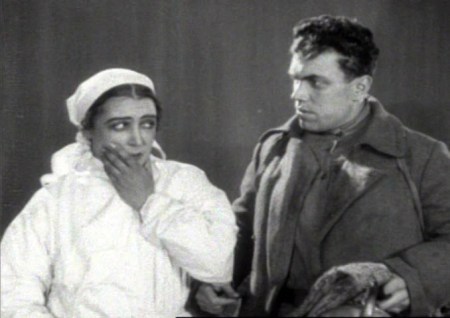
Rounding out the cast is a boisterous soldier named Gusev (Nikolai Batalov), who is flirting with a nurse named Masha (Vera Orlova). Finally, there is Kravtsov (Igor Ilyinsky, best known in the U.S.A. for being the recipient of A Kiss from Mary Pickford), an amateur sleuth who hopes to catch Erlich in his nefarious activities.
But where is Mars in all this? Glad you asked! We take a trip to the red planet where Queen Aelita (Yuliya Solntseva) has become addicted to spying on Loss at the royal observatory. Her husband, Tuksub (Konstantin Eggert), is not pleased with her Earth obsession but Aelita is assisted by her allies, Ihoshka (Aleksandra Peregonets) and Gor (Yuri Zavadsky).

Back on Earth, Loss becomes more and more convinced that his wife is having an affair with Erlich. He becomes broody and downright nasty as he obsesses over her imagined unfaithfulness. Natasha was tempted by Erlich for a moment but his profligate spending soon disgusted her.
Finally, jealousy becomes too much for Loss. He shoots Natasha and escapes their apartment building. In order to evade the law, he takes Spiridinov’s identity and sets about building a space ship that will fly him to Mars so that he can investigate the mysterious message. Gusev, who is bored with civilian life, volunteers to come along and they are also joined by Kravtsov, who knows that Loss has murdered Natasha.
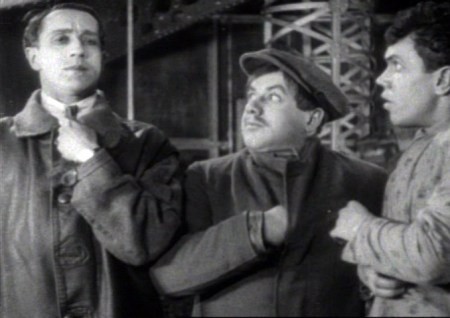
Will the Earthlings be welcomed by the Martians? Will Loss pay the price for his crime? You’ll have to see Aelita to find out!
Aelita is essentially two films and one is significantly more interesting than the other. It’s not the one you think.
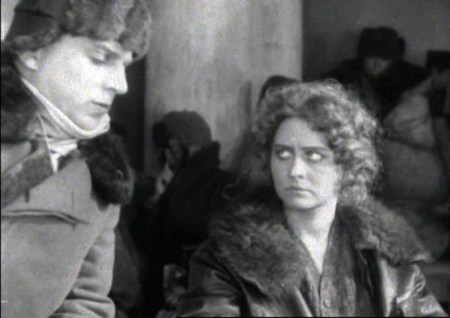
Why the design of the Martian segments is groundbreaking and fascinating to see, the characters never really come into their own as three-dimensional people. In contrast, the earthy Soviets of Earth are immediately interesting and sympathetic. However, people see this movie for the sci-fi stuff, so it’s worth taking a moment to compare Aelita’s look and feel with the other silent space operas I have reviewed on this site. (There are many, many more that I have not yet reviewed but in the interest of keeping things to a manageable length, I hope you will indulge me in this limitation.)

Georges Méliès’ A Trip to the Moon contains, arguably, the most iconic shot in all of early film. It is also one of the earliest science fiction blockbusters. However, the look of the moon and its inhabitants is very much in the Méliès mode. In short, the weird little acrobatic aliens could have just as easily been imps in a fairy tale or nightmare characters tormenting a dreamer. (Not to take anything away from this wonderful film, of course. Just that it followed brand conventions.) However, if we dig below the surface, there is some juicy anti-colonialism to sink our teeth into, so that’s fun.
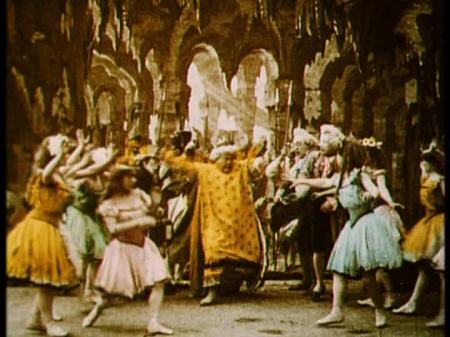
An Excursion to the Moon, Segundo de Chomon’s 1908 rip-off lunar fantasy, is significant in that it is the only picture discussed here that has no obvious political message. Chomon’s moon is occupied by a European monarchy, pastel-colored ballerinas, and acrobats in leotards festooned with crescents and stars. The explorers explore a bit, run off with a lunar princess and, presumably, live happily ever after.

Himmelskibet, made a decade later, is generally reckoned to be the first feature-length space opera and it is interesting to see how many classic sci-fi elements are included in this Danish production. However, the landscape and culture of Mars itself is basically a Greco-Roman hippy commune, which is not surprising considering the naïve, pacifist message of the picture. However, the leather flight suits look suitably sci-fi.

The Martian designs for Aelita are legendary and for good reason. The sets by Isaac Rabinovich and Victor Simov and particularly the costumes designed by Aleksandra Ekster are the most discussed elements of the film. That being the case, it seems redundant for me to discuss them extensively. Instead, let’s just admire:
Nothing like it have ever been seen in sci-fi and, as stated earlier, we are still feeling the influence of Aelita. Of course, this is not to suggest that Aelita was the first science fiction film with an alien look. Edison’s 1910 film entitled A Trip to Mars creates a bizarre alien landscape populated with giants played by actors sporting heavy prosthetics. However, Aelita’s combination of plastic, wire and sharp geometry is truly iconic. (But even this film could not escape a dab of Greco-Roman design, likely a holdover from the novel as the book Martians were descended from Atlanteans.)

The film also incorporates praise for the workers’ revolution on Mars, complete with a crossed hammer and sickle. It’s a coarse appeal to patriotism, of course, but no worse than the unfurling stars and stripes that are found in many a silent Hollywood film. (Aelita was later banned in the USSR. Science fiction had fallen out of favor and besides, someone probably noticed the plot point about an opportunist seizing on the legitimate grievances of the common people and using them to grab power. Dare I say The Revolution Betrayed?)

Rascals and rogues have always had a place of honor in Russian entertainment and the revolution inspired some truly wonderful works with sleazy grifters as protagonists. I am particularly fond of The Twelve Chairs, an oft-filmed work by the delightful Yevgeny Petrov and Ilya Ilf. (And do read its sequel, The Golden Calf.) One gets the sense that Protazanov and company were far more comfortable on this familiar turf than they were with flitting off to Mars. (Our director was clearly more at home with the grim and gritty romance The Forty-First.) I think the ending of Aelita more than proves this notion.
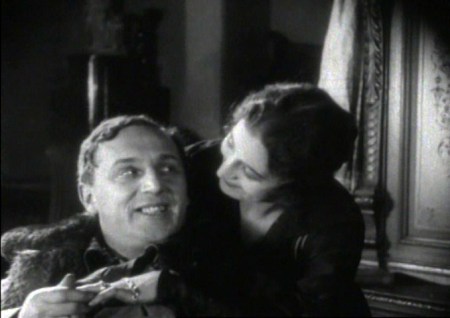
Spoiler: All the events after Loss returns home were dreamed up by him. Natasha is not dead, there is no Aelita and our engineer protagonist could really use some therapy. Protazanov does an excellent job of conveying exactly where the break between the conscious and subconscious exists. Once Loss heads back home from his six month government job, the story goes off the rails and the story goes kooky places. Jolly Gusev becomes morose and obnoxious to his wife. Erlich seems to cease his profiteering and disappears from the story almost entirely. The foolish Kravtsov is suddenly getting arrest warrants to serve singlehanded.

More Spoilers: Once Loss and company end up on Mars, the story’s logic becomes even more surreal. Aelita asks him to kiss her and the effect is so electric that she faints on the spot. Yup, Loss dreams himself an irresistible rake who knocks ladies dead with a kiss. (Harry Langdon pulled the same shtick with more success in Soldier Man. At least there it was meant to be funny.) Oh good gravy. While Loss of the book actually is a space traveler, Loss of the film is more of a Soviet Walter Mitty.

Even More Spoilers: It turns out that Natasha was never murdered, Loss missed. Erlich is the real killer (he killed Spiridinov) and the Martian plot was entirely in Loss’s head. The mysterious message? A marketing campaign for tires. Loss goes back to Natasha but I think she’s a fool to take him back, personally. He has been acting like a perfect ninny, which is bad enough, but actually trying to shoot her? Good heavens!
Okay, so our hero is not exactly the most compelling or likable creature ever to grace the screen. (And I’m not entirely sure why it was necessary for Nikolai Tsereteli to play two characters.) However, his dreary presence is more than compensated for by the colorful supporting cast. Valentina Kuindzhi is particularly good as poor, sweet Natasha and I always love to see Igor Ilyinsky in pretty much anything. (If you’ve never seen him before, Ilyinski’s screen persona sort of combines Oliver Hardy’s fussiness with a dim version of Harold Lloyd’s go-getter.)

We also get groundbreaking Martian designs and Protazanov’s smart manipulation of reality. Sure, the final twist is a cliché but at least it was handled as well as can be expected. I enjoyed the heck out of Aelita but I know that a lot of viewers were disappointed. It’s all a matter of anticipation, I think. If you’re expecting a giant space opera, you will be bitterly disappointed. However, if you are expecting a slice of Soviet melodrama with space fantasy sequences, Aelita has a lot to offer. I’m not sure I would recommend it as your first Soviet silent but it is most definitely worth seeing.
Movies Silently’s Score: ★★★★½
Where can I see it?
Aelita is available on DVD from Flicker Alley. It includes intertitles translated to English and a very nice piano score from Alex Rannie.
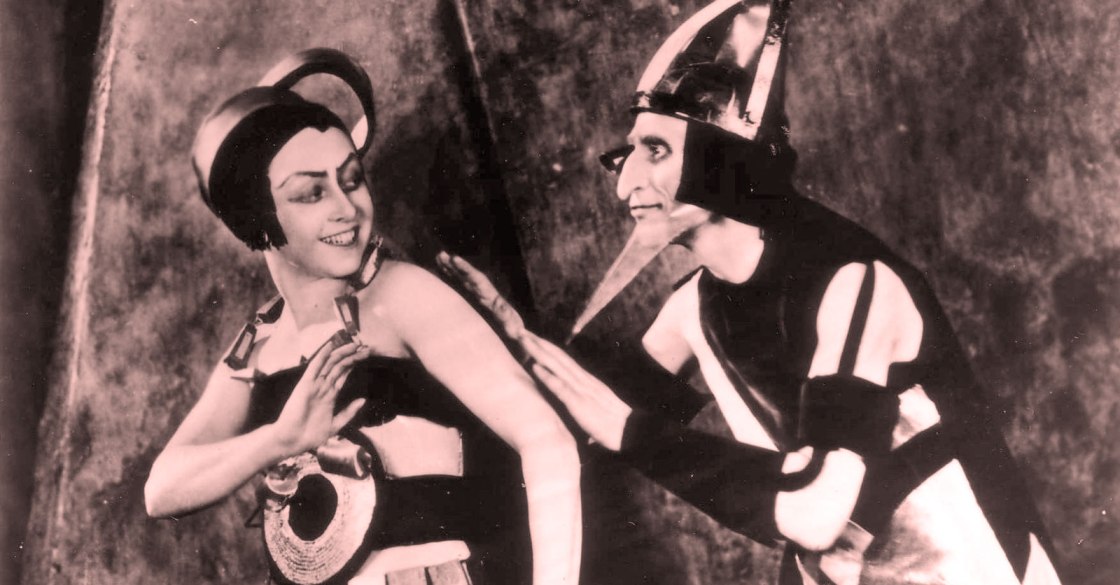








It’s interesting to look at the similar modernist aesthetic style of Protazanov’s Aelita to L’Herbier’s L’inhumaine made a year prior. And also them being more memorable in the style over substance sense where the plots have barebone character development and interaction within the story. To me, science fiction usually suffers from this shortcoming of writing more than any other genre (even Westerns for television, albeit routinely conventional had more oomph in the pathos department). Lots of technobabble and spectacle. Do you usually get this from scifi films in general more than from other genres or just that poor writing is a universal woe regardless of the genre?
I think anytime you are dealing with a genre that takes the viewer out of their time and place, the screenwriter has to work doubly hard in order to establish the world.
Thanks for the review, and all the historical background! I saw this movie long ago. The only parts I remembered were the spectacular, gorgeous Martian sets and costumes. I had completely forgotten all the Earth-bound characters and subplots. I will need to go back and watch this again! The part I most remember is a bunch of people being fed into a big machine – I think that was from “Aelita,” though I might have it mixed up with “Metropolis” or another old b/w sci-fi.
So glad you enjoyed! Yes, there is a scene in Metropolis with the workers being fed to the fiery idol and the hero screaming, “Moloch!” Aelita abuses its workers by freezing them (!) and locking them in cold storage. 😉